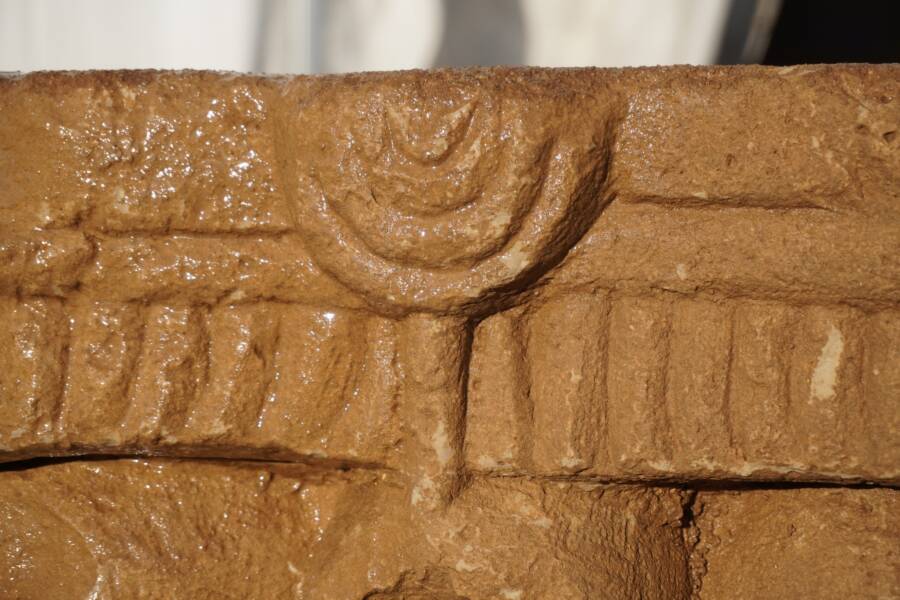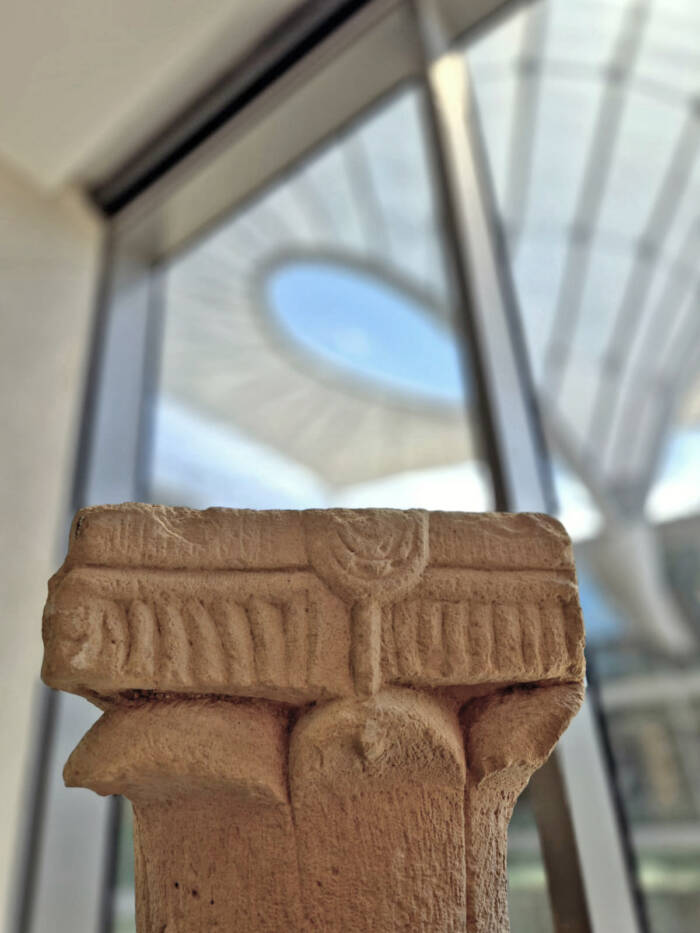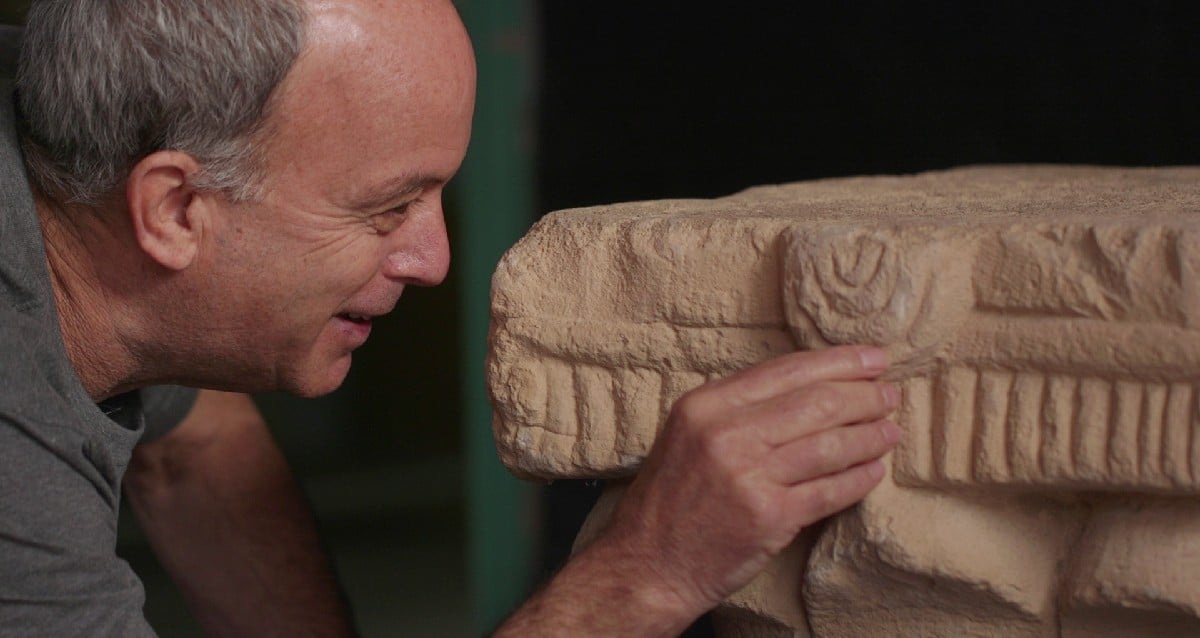Discovery of Mysterious Ancient Pillar in Jerusalem Could Rewrite History of the Menorah Symbol
Now, researchers have some guesses about how and why this mysterious ancient capital was first created.
The Larger Mystery Behind This Ancient Pillar Capital

Israel Antiquities Authority/FacebookA close-up of the possible menorah detail on the ancient stone capital.
According to Dr. Orit Peleg-Barkat of the Hebrew University of Jerusalem, who specializes in ancient architectural decoration, this capital is a remarkable artifact that “exhibits truly distinctive features.”
“Most significantly, the upper section — traditionally adorned with a floral motif — instead features what resembles an eight-branched menorah,” she explained. “This is particularly intriguing because seven-branched menorahs typically appear on capitals from synagogues of the late Roman and Byzantine periods, such as those found at Capernaum and Caesarea.”
She continued: “The absence of any evidence suggesting a synagogue at this site raises questions about the capital’s original purpose and context. It’s possible the craftsman intended to carve a conventional flower design but, due to his limited familiarity with standard models, created something that bears a resemblance to a symmetrical eight-branched lamp.”
Meanwhile, another researcher suggested that the capital may have once belonged to a Jewish settlement, and that its destruction was linked to the Bar Kokhba revolt of Judean Jews against Roman forces in the second century C.E.

Israel Antiquities Authority/FacebookThis ancient stone capital is now on display at the Jay and Jeanie Schottenstein National Campus for the Archaeology of Israel in Jerusalem.
“Finding objects decorated with menorahs, certainly on heavy stone objects, is a clear indication of the existence of a Jewish settlement,” Dr. Yuval Baruch, Deputy Director of Archaeology at the Israel Antiquities Authority, stated.











